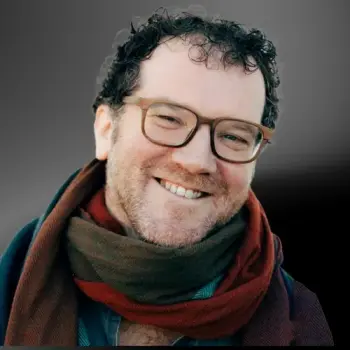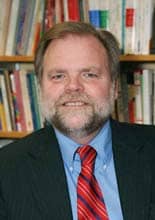Interdependence. We live in a world of lively and dynamic interdependence. Whitehead once noted that the whole universe conspires to create each moment of experience. Too often, seminaries have acted as if they are self-contained and do not need pastors, laypeople, congregations, or denominations for their institutional sense of mission and vitality. Within the body of Christ, writ large, everything is connected. Seminaries will eventually fade into irrelevance if their mission is primarily institutional survival and not the well-being of the whole church. Seminaries need to enter into partnerships that strengthen congregations in terms of worship, preaching, pastoral care, and Christian formation. Apart from strong and vital congregations, seminaries will experience a shrinking number of applicants and well-qualified students. The education of pastors does not end with the M.Div. but continues over a lifetime through workshops, colleague groups, and seminary-sponsored congregational enrichment programs.
The relational nature of life compels seminaries to ask:
- How does our pedagogy strengthen congregations in fulfilling their vision?
- Where can we join with congregations and denominations in creating hybrid programs emerging from the creative intersections of church and seminary?
- How do we help congregations more creatively and intentionally respond to cultural and social transformation, pluralism, and the postmodern ethos?
- What practical guidance can we provide for denominations and congregations in areas such as stewardship, evangelism in a pluralistic age, spiritual formation, social networking, and other forms of technology?
- Where can we partner with other institutions, for example, denominational offices, councils of churches, CPE programs, spiritual life programs, parish resource programs, and on-line vehicles to create theological, spiritual, and practical synergies for professional, congregational, denominational, and social transformation?
Innovation. Today's seminaries are called to originate novelty to match the novelty of the postmodern, pluralistic, interdependent, and rapidly changing world. It is a truism that seminaries often move slowly and are decades behind the cultural and scientific ethos in terms of pedagogy, technology, and practice. Academic Ph.D. programs are often backward rather than forward looking in scope. In academia, cultural and congregational irrelevance is often rewarded while practical and concrete reflection, necessary for the flourishing of the church and its mission, is seen as inferior to theoretical research. While we need to treasure the living thoughts of dead people, Ph.D. programs that train potential theological professors must also be innovative in research, focus, and pedagogy.
Seminary professors need to be interdisciplinary in attitude and training. Study outside their academic field is no longer optional for faculty; it is a necessity for responsible scholarship and teaching. This may require seminaries to transform and overhaul their approaches to teaching the traditional academic disciplines. Indeed, the boundaries of disciplines must be blurred and expanded in order to be relevant to a dynamic world. Seminaries are not primarily archivists of past theological achievements; they are adventurers in the integration of ancient, future, and present. They must continually join theory and practice, and concrete and abstract. In the spirit of Whitehead's metaphor of the airplane flight, seminary education, at its best, begins with concrete experiences of ministerial call and congregational life, soars upward in quest of larger perspectives, and then returns to the concrete to test theological reflection, only to continue the adventure with further syntheses of theory and practice.
Seminaries need to be prudent risk-takers, constantly looking for creative and revenue positive partnerships and exploring new ways of approaching their vocation as the mind of the church. The old time religion may have been good enough for grandma or grandpa, but seminaries must apply spiritual and theological CPR to traditional ideas for these ideas to live again. Once it was said that pastors need to have the New York Times in one hand and the Bible in the other. Today, we must supplement the New York Times with the Huffington Post, Patheos, various online resources, as well as cable news to be relevant and innovative. Like the prophets of old, today's seminaries need to cultivate a "fluid eschatology," looking toward the horizons of the future in their embrace of emerging possibilities for congregational, educational, and spiritual transformation. This is the calling of adventurous seminaries living in partnership with adventurous congregations.





